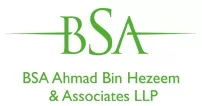Abstract
Following the latest Torch fire, Michael Kortbawi of BSA Ahmad Bin Hezeem & Associates looks at the rules regarding fires in the UAE.
Analysis
1. What causes high-rise tower fires?
While the combustion of high-rise buildings in the UAE has been a prominent news feature in recent years, there seems to be no common cause. In the case of the 2012 fire in JLT's Tamweel Tower, it is believed that a lit cigarette being carelessly discarded in a pile of rubbish caused the tower to catch fire. The infamous fire at the Address hotel on NYE 2015 was attributed to an electrical short circuit. As with the most recent fire, the cause of the 2016 Torch Tower fire is still unknown.
2. What caused of the rapid spread of fires on the façade of skyscrapers?
While the cause of the fires may differ, the rapid spread of the flames in each instance can be attributed to the aluminum composite cladding used on the exterior of each building. Until 2011, there was no UAE regulation governing the use of aluminum cladding on a building's exterior and the use of non-fire resistant cladding was commonplace. It is estimated that at least 70% of buildings in Dubai constructed before the year 2009 are cladded with this non-fire resistant material. Following an update to the 2011 Fire and Life Safety Code, all buildings over 15 meters tall are required to have fire resistant aluminum cladding. The problem lies in the fact that the code is not applied retrospectively and existing towers will only have to comply with the new cladding regulations when the buildings are due for maintenance.
3. How can we prevent potential disasters of this nature in the future?
Unfortunately, there is no fool proof method of fire prevention. However, certain measures can be taken to minimize the risk of fire. For example, tenants should avoid the following; smoking in high rise towers, barbequing on balconies, discarding rubbish on balconies and leaving appliances plugged in constantly. To minimize the damage caused when a fire does occur, it is recommended that non-fire resistant cladding be replaced by a fire-resistant alternative. While there would be a significant cost to this measure, it can be argued that it would be far less costly than completely renovating the building in the case of it being ravaged by fire.
4. Who will bear the cost of repairs on buildings already affected by fires?
The Dubai Jointly Owned Property Law of 2007 deals with jointly owned property such as high rise towers. It stipulates that a developer is liable to the owners for all mechanical, electrical, plumbing, etc. installation problems for a year and for structural defects for 10 years from the date of issue of the completion certificate of the building. Therefore if the occurrence of the fire or its rapid spread were related to such installations or structural defects, the developer may be liable. However, in many cases the ten year liability period in many cases will have expired. In such cases, the question arises of whether the owner's association can be liable for fire damage caused by flammable cladding. Additionally, if the flammable material was used on the basis of a recommendation from the contractor or architect the developer is unlikely to be liable as both the contractor and architect are deemed to have specialist knowledge of the material that the developer would not possess.
5. What will happen to the residents of the affected buildings?
This depends on the type of insurance policy taken out by the Home Owners Association; it is likely that insurers will bear the brunt of loss or damage in the event of a fire if there is coverage in place. The question remains as to which party's insurance will pay the cost–a unit owner may seek damages from developers who then sue the contractors who may in turn sure the architect and so on. It is recommended for unit owners in jointly owned buildings to consult with the original developers to understand the nature of the insurance in place so they may take out insurance in their own name to cover any risks not covered in the building's insurance policy and not leave themselves exposed to losses that may be incurred by fire. As it currently stands only 3 in 10 Dubai residents have had the initiative to take out an insurance policy in their own name to cover their material belongings. Those who have no policy in place may have to bear the cost of repairing and refurnishing the property in the event of fire.
6. What is the new procedure for choosing skyscraper façades?
In response to the fires, regulations were enacted to ban the use of non-fire resistant aluminum composite panels. As per the amended regulations all potential façades must be fire-resistant so that damage caused by future fires would be limited. Failure to comply with the new code regulations will result in fines ranging from 500 to 50,000 AED for each violation.
The content of this article is intended to provide a general guide to the subject matter. Specialist advice should be sought about your specific circumstances.

